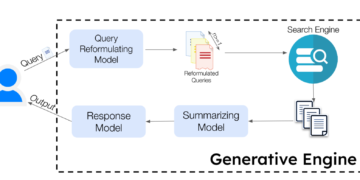Successful SEO for schools improves visibility and accessibility. In this way, target searchers like prospective students and parents can connect with you.
SEO is essential to your marketing strategy to increase your school’s enrollment and get a higher rank in competitive education marketing.
But how will this strategy work? At this point, we will clarify two topics to answer this question.
- What does SEO for schools really mean?
- Best SEO strategies for schools and educational institutions
What does SEO for schools really mean?
Your school’s website must be accessible and available for searchers. SEO for schools and educational institutions ensures that you will be there when people look for you.
In addition, students and families are meticulous during the decision periods. They will look for
- information about options,
- answers to their specific questions,
- latest educational trends, etc.
At this point, your website may serve as a source of information. That’s why SEO strategy for schools becomes the backbone of your educational business.
Search engines aim to offer people relevant and accurate content. So the algorithms of search engines (like Google) measure your website’s relevance and popularity according to fundamental ranking factors which continually change. Therefore you should update and develop your SEO according to current evaluations of search engines.
There are basic digital marketing strategies you can follow to improve your search performance and, in the end, your SEO.
Best SEO Strategies for Schools and Educational Institutions
While SEO is crucial for schools and educational institutions, many ways to improve your SEO. Even optimization of your SEO has to be updated regularly because the search engines frequently change their criteria for ranking.
There are essential strategical points you can follow. These are:
- Keyword research
- Unique content
- Engaging your prospects
- Linking strategy
- Meta descriptions
- Effective blog
- Local SEO
- Mobile-friendly website
Now, we can have a closer look at these points.
Keyword research
The basic of SEO for schools is finding the relevant and appropriate keywords for your institution. Search engine results are linked to these keywords because your prospective students and their families use search engines with keywords to find your school.
The significance can be seen as 71% of marketers use strategic keywords as the base of their SEO strategy.
Google’s Keyword Planner can help you see the keywords with a high search volume. But this is not enough. You should not pick these keywords just because of their high ranking. The key point is finding keywords most relevant to your school’s offers.
You should be more specific and authentic about what your institution and programs promise to searchers. Using these keywords will enable you to reach your target searchers more efficiently, and your ranking will increase on SERPs.
Moreover, once you decide on your relevant keywords, you should use them efficiently. Be sure your titles, headlines, body text, and image alt texts on all key pages on your website include these keywords.
Unique content
Unique pages require unique content, which is an essential part of SEO strategy for schools.
The first step to uniqueness is creating engaging, relevant, informative, and keyword-targeted content on your school’s website.
To reach your audience, you should understand what they look for when they are on your site. You can perform this throughout keyword research. Understanding your audiences’ behavior enables you to create unique and targeted content. In this way, you can choose your specific keywords for placing on your pages to be accessed.
Search engines have special algorithms that ignore and even punish pages that are not unique and authentic. So, having rich content and not having duplicate pages on your website is crucial. You should avoid repetitive content also throughout your whole site.
Engaging your prospects
The design of your website is as essential as the content in it. So you should optimize your website to reach prospective students and engage them in your educational institution.
As we all know, the first impression is crucial. Your website gives the first impression to your target audiences and the chance to distinguish yourself from all of your competitors. After a search on the internet, your prospects will click on your website and meet you.
An impressive web design attracts prospective students and makes them want to spend more time on your website and be more interested and engaged in your content.
Your web design should help the users find the content they look for and make it easier, not complicated. For instance, a well-organized menu and a search bar are the basics for your users. Ensure your users are not lost on your website; help them reach the page they want.
You will also call search engines’ attention by developing user experience on your site. Optimized navigation, clean links, fast page loading, and clear guidance are the factors that search engines consider in ranking. So you should be attentive to developing your website’s architecture to increase your school’s SEO.
A helpful tip: You can use Calls-to-Action (CTAs) with links to applications or forms on your website to engage prospects. These CTAs should be clear and direct to the point to increase your engagement and user experience.
Linking strategy
There are three ways of link building to evaluate your SEO: internal links, external links, and backlinks. The first one, internal links, are the links you give to your website’s internal pages. Providing internal links to your relevant pages
- keeps users on your site longer and
- gives them a coherent vision of your institution.
At this point, give a chance to anchor text which means linking keywords to your other pages; this affects your SEO ranking.
External links in your content are also significant. These links direct users to other websites which may be resources about your department or program pages, blogs, or faculty websites. These links prove that your content is researched, reliable, and valuable to search engines.
However, do not forget that these external links should connect users to reputable, trusted, and authoritative websites.
The other link-building strategy for your SEO is backlinks. Backlinks are the links that direct readers to your website by the links on other websites. These can be education blogs or other institutions that you cooperate with. Backlinks are essential to raise your website traffic and provide a higher rank in search.
Meta descriptions
Another SEO strategy for your educational institutions is meta descriptions. A meta description is a short paragraph that searchers see on Google search results.
Prospective students and their families consider these descriptions, so they must be attractive, relatable, and keyword-rich.
In your website’s meta description, you can use specific keywords relevant to your school and the unique offers of your institution.
This will make it easier for search engines to relate your content with the query and helps you to access more prospective students you target.
An effective blog
A blog on your website is a fantastic way to have relevant and living content that search engines care about in ranking. Search engines love fresh and relevant content, and a blog is the best way to do this regularly.
Moreover, prospective students and their parents are willing to learn more about your school. They may have questions about what you particularly offer them about their career, higher education, social life, scholarships, educational news, etc.
Your blog is the address they will get answers so you should give easy access to your blog on your website.
Local SEO
Since 46% of all searches on Google seek local information, localization is crucial for all kinds of business. This is also a determinant for educational institutions.
When prospective students search for schools in a specific location or region, local SEO for schools ensures that if your school is in that region, you will be in the search results.
Local SEO can be improved by specific and related keywords of your school. For instance, you should be sure that you have location-specific keywords in the content of your website. Moreover, NAP (name, address, and phone number) consistency is crucial for your local SEO.
You should add them to your website according to the format of Google. And also, search engines demand a web page that includes your school’s all information.
Mobile-friendly website
To reach prospective students, you should be sure that your website is mobile-friendly because approximately half of the web traffic comes from mobile devices. Moreover, for years, most students have been using their mobile devices for search, and giving them an easy user experience is crucial for your SEO.
A mobile-friendly website will enable users to access your website through all their devices and wherever they want. This will generate your website traffic and improve your school’s SEO directly.
You can check your website’s situation from Google’s Mobile-Friendly Test. This test will reveal the fundamental technical problems and errors in your website that are incompatible with mobile devices.
To sum up
The SEO strategy for schools and educational institutions is substantial for visibility and enrollment. While the criteria of the search engines change constantly, there are basic strategies that can improve your SEO.
Specific keywords, unique content, engaging your prospects, a linking strategy, meta descriptions, a helpful blog, local SEO, and your mobile-friendly website will take you a step forward in competitive education marketing.
You can also get help from trusted education marketing agencies. These agencies can guide you in determining your strategy and how to improve your SEO successfully. Here are reputable and valuable education marketing agencies in the USA and the UK.
Read the full article here













